Neck Lift in Bulgaria
Search and Compare the Best Clinics and Doctors at the Lowest Prices for Neck Lift in Bulgaria

Find the best clinics for Neck Lift in Bulgaria
No clinics available
Thailand offers the best prices Worldwide
Price: $ 275

- Home
- Bulgaria
Compare Before & After Photos of _procedure_photos.phpNeck Lift
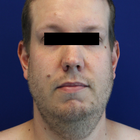

Front view
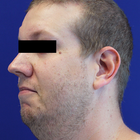
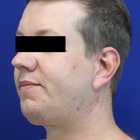
Half-side view
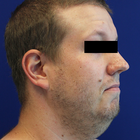

Full-side view
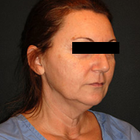
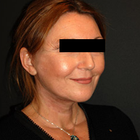
Half-side view
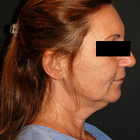
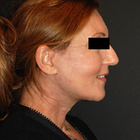
Full-side view
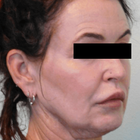
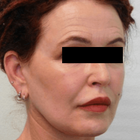
Half-side view
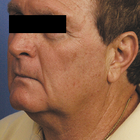
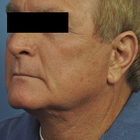
Half-side view

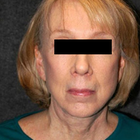
Front view
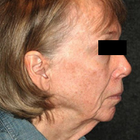
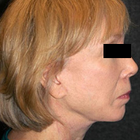
Full-side view
WHY US?
At Medijump, we're making medical easy. You can search, compare, discuss, and book your medical all in one place. We open the door to the best medical providers worldwide, saving you time and energy along the way, and it's all for FREE, no hidden fees, and no price markups guaranteed. So what are you waiting for?

Free

Best Price

Widest Selection

Risk-Free
What you need to know about Neck Lift in Bulgaria

Aging is inevitable as you grow older, the good news is that technological advancements in the medical field have now found exemplary ways to slow down the aging process.
Over time, we lose our youthful contours in our faces and down our necks and these changes in our facial features could be due to old age, gravity, stress, environmental conditions or most likely a combination of all these factors.
A full facelift is usually one solution to rejuvenate your youthful look. However, there are cases whereby a patient’s upper facial area still displays a youthful look but excess wrinkling on the neck’s skin and a double chin are apparent. If your neck area doesn’t align with your upper facial appearance, then undergoing a neck lift might be a solution for you.
A Neck Lift, or its technical term Lower Rhytidectomy, is a cosmetic surgical procedure that enhances visible signs of ageing in your jawline and down your neck. The procedure might be performed on its own or as a part of a facelift.
What does a Neck Lift Procedure Involve?
A neck lift is usually a set of procedures to improve the lower part of your face and is typically done as a part of a facelift. Furthermore, this type of treatment procedure can also treat:
- Jowls - excess fat in the lower face
- Double chin or Turkey wattle - excess fat under the chin
- Loose skin on the neck
- Muscle banding in the neck - creates abnormal lower facial contours
The first step before undergoing the procedure is to consult with your surgeon. It is important that you discuss everything with your surgeon and fully understand the procedure and the result. You should also explore all of your options and alternatives. Keep in mind that a neck lift will not change your fundamental appearance nor will it stop your aging process.
While everyone has the possibility to undergo this type of treatment procedure, the perfect candidates for a neck lift are:
- Nonsmokers
- Individuals who do not have medical conditions that could possibly impair healing
- People with realistic expectations and a positive outlook
During your consultation, your surgeon will also:
- Discuss the type of anesthesia that will be used during the surgery
- Evaluate your general health, as well as any pre-existing health conditions
- Discuss other optional alternatives for the procedure
- Examine and measure your face
- Discuss possible outcomes of the procedure as well as potential risks and complications
In preparation for a neck lift treatment procedure, you may be advised to do the following:
- Avoid certain medications and supplements before your surgery and doing so may reduce the risk of excessive bleeding during the surgery.
- If you smoke, you will need to stop smoking four weeks before and four weeks after your surgery as it is necessary to aid the healing process.
- Eat a healthy diet
On the day of your scheduled surgery, it is advisable that you wear loose and comfortable clothing. Wear a type of clothing that you will not need to pull over your head and neck. In terms of anaesthetics, you may opt for sedation and local anaesthesia or go under general anaesthesia.
During your surgery, if minimal contouring is needed, it can be done with liposuction alone. As for a full neck lift procedure, incisions may be done either under your chin or behind your ears. These incisions will be closed with sutures and drains may also be placed before your wounds are bandaged.
How Long Should I Stay in Bulgaria for a Neck Lift Procedure?
A neck lift is an outpatient surgical procedure, however, you also have the option to stay overnight in the hospital. You should remain in the Bulgaria for at least 4-5 days after the surgery as there will be scheduled follow-up check-ups with your surgeon to monitor your healing. The sutures will need to be removed after a few days.
What's the Recovery Time for Neck Lift Procedures in Bulgaria?
Typically, most people are able to return back to work in ten to fourteen days. In terms of having a physically active lifestyle like playing sports or exercise, you will need to wait at least three weeks or when your doctor gives you the all-clear.
What sort of Aftercare is Required for Neck Lift Procedures in Bulgaria?
Note that it will most likely take several weeks to a couple of months for the swelling to fully disappear. You will be given specific instructions as to how to take care of your surgical site and drains, as well as medications to apply or take orally to help with your healing and to reduce the risk of infections. It is very important that you give yourself ample time to heal to get the most benefit from your treatment procedure.
What's the Success Rate of Neck Lift Procedures in Bulgaria?
Results for neck lift surgery are normally long-lasting. In general, patients who have gone through a neck lift surgery have been very satisfied with the results.
Although possible risks and complications with this type of procedure are rare and if you experience any of the following symptoms, you will need to consult with your doctor immediately.
- Infection and bleeding
- Adverse reaction to anesthesia
- Scarring
- Allergic reaction
- Changes in sensation
- Hematoma or seroma
- Numbness and tightness in the neck area
Are there Alternatives to Neck Lift Procedures in Bulgaria?
For those who are not a fan of surgery, there are non-surgical alternatives that are now available to help you enhance your facial appearance:
- Botox neck lifts - a non-surgical lift that tightens your neck muscles. Botox will be injected into the platysmal bands of your neck. Result typically lasts for three to four months and a touch-up treatment will be required.
- Thermage - also a non-invasive radiofrequency treatment procedure that smoothens and tightens the contours of your neck area, giving you a younger-looking appearance. This procedure can also be used to tighten your sagging stomach, knees, legs, butt, and arm skin.
- Ultherapy - by using ultrasound technology, this type of non-surgical treatment procedure can lift and tighten your loose skin, the result is usually visible in just one treatment.
Whilst the information presented here has been accurately sourced and verified by a medical professional for its accuracy, it is still advised to consult with your doctor before pursuing a medical treatment at one of the listed medical providers
No Time?
Tell us what you're looking for and we'll reachout to the top clinics all at once
Enquire Now

Popular Procedures in Bulgaria
Prices Start From $28

Prices Start From $1,945

Prices Start From $167

Prices Start From $672

Recommended Medical Centers in Bulgaria for procedures similar to Neck Lift

- Interpreter services
- Translation service
- Religious facilities
- Medical records transfer
- Medical travel insurance
- Health insurance coordination
- TV in the room
- Safe in the room
- Phone in the room
- Private rooms for patients available

- Interpreter services
- Translation service
- Religious facilities
- Medical records transfer
- Medical travel insurance
- Health insurance coordination
- TV in the room
- Safe in the room
- Phone in the room
- Private rooms for patients available

- Interpreter services
- Translation service
- Religious facilities
- Medical records transfer
- Medical travel insurance
- Health insurance coordination
- TV in the room
- Safe in the room
- Phone in the room
- Private rooms for patients available

- Interpreter services
- Translation service
- Religious facilities
- Medical records transfer
- Medical travel insurance
- Health insurance coordination
- TV in the room
- Safe in the room
- Phone in the room
- Private rooms for patients available
Neck Lift in and around Bulgaria
Introduction
Bulgaria has plenty to offer and tourists are going to be very impressed with the country’s mountainous landscapes, beautiful Black Sea beaches, fascinating history, friendly locals, lively nightlife, and affordability. Although the country’s holiday tourism is very much on the radar, it is also actually quite popular with medical tourists, due to its modern medical centers, highly trained medical professionals, state-of-the-art equipment, affordable healthcare, and mineral baths, thousands of medical tourists visit this country each year. Most of the medical tourists come for dental treatment, orthopedic surgery, elective surgery, neurosurgery, as well as health screening.
Popular Cities and Regions in Bulgaria
Bulgaria’s laid-back capital city, Sofia, is truly a must-visit. It is full of museums, Ottoman mosques, communist architecture, chic galleries, Eastern Orthodox churches, amazing restaurants, and upbeat clubs. One of the most popular landmarks in the country is the Aleksander Nevski Cathedral, which is an awe-inspiring church built between 1882 and 1912 to honor 200,000 Russian soldiers who died fighting for the independence of Bulgaria during the Russo-Turkish war. If you want to relax on beautiful beaches visit Varna, which is a major tourist destination during the summer. The second-largest, city in Bulgaria is Plovdiv and it is one of the oldest continuously inhabited cities in Europe. Tourists are attracted by the Roman Amphitheatre, Archeological Museum, and Tsar Simeon Central Garden.
Transport in Bulgaria
Most international tourists will arrive at Sofia Airport, which serves flights to most numerous major cities in Europe and the Middle East. There are several budget airlines that operate flights from this airport, including Ryanair and Wizz Air. Domestic flights are available, but they tend to be expensive. Therefore, to travel from one city to another, trains and buses are the best option. Buses and trains are punctual and affordable. However, if you are in a hurry, you should avoid trains as they can be a little slow. To travel around big cities, taxis are widely available and are really cheap. Just make sure you choose a licensed taxi to avoid being overcharged.
Visas in Bulgaria
While Bulgaria is not yet a part of the Schengen Area, it has a visa policy that is based on the Schengen system. Therefore, holders of Schengen Visa are allowed to enter the country. Additionally, citizens of 62 countries, including the US, Australia, and the UAE, can stay in the country for up to 90 days without a visa.
Weather in Bulgaria
From June to August, Bulgaria experiences summer. The weather can get a bit hot and humid, with an average temperature of 19°C to 21°C. July is the wettest month in the country. Winter, from December to February, is usually freezing. Autumn and Spring bring pleasant weather.
Additional Info
- Local Currency: The official currency is the Bulgarian Lev (BGN). 1 USD will get you approx. 1.8 BGN.
- Money & Payments: You can find ATMs in every city in the country. Credit cards are accepted in bigger restaurants and hotels. Tipping is sometimes expected.
- Local Language: Bulgarian is the official language in Bulgaria. Turkish and Roma are spoken by a minority of people. English is becoming more and more common in the country, but it is not widely spoken.
- Local Culture and Religion: Christianity dominates the population of Bulgaria, followed by Islam and Judaism.
- Public holidays: Bulgaria celebrates several historical and religious holidays, such as Orthodox Good Friday, Orthodox Easter Day, Independence Day, Culture and Literacy Day, Christmas Day, and Liberation Day.
Popular Searches
- Plastic Surgery in Thailand
- Dental Implants in Thailand
- Hair Transplant in Thailand
- Breast Augmentation Thailand
- Gastric Sleeve in Thailand
- Gender Reassignment Surgery in Thailand
- Laser Hair Removal in Bangkok
- Botox in Bangkok
- Dermatology in Bangkok
- Breast Augmentation in Bangkok
- Coolsculpting in Bangkok
- Veneers in Turkey
- Hair Transplant in Turkey
- Rhinoplasty in Turkey
- Stem Cell Therapy in Mexico
- Rhinoplasty in Mexico
- Liposuction in Mexico
- Coolsculpting in Tijuana
- Rhinoplasty in Korea
- Scar Removal in Korea
- Gastric Sleeve in Turkey
- Bone Marrow Transplant in India
- Invisalign in Malaysia
- Plastic Surgery in the Dominican Republic
- Tummy Tuck in the Dominican Republic
- Plastic and Cosmetic Surgery in Poland
- Rhinoplasty in Poland
- Hair Implant in Poland
- Dental Implants in Poland
- IVF in Turkey